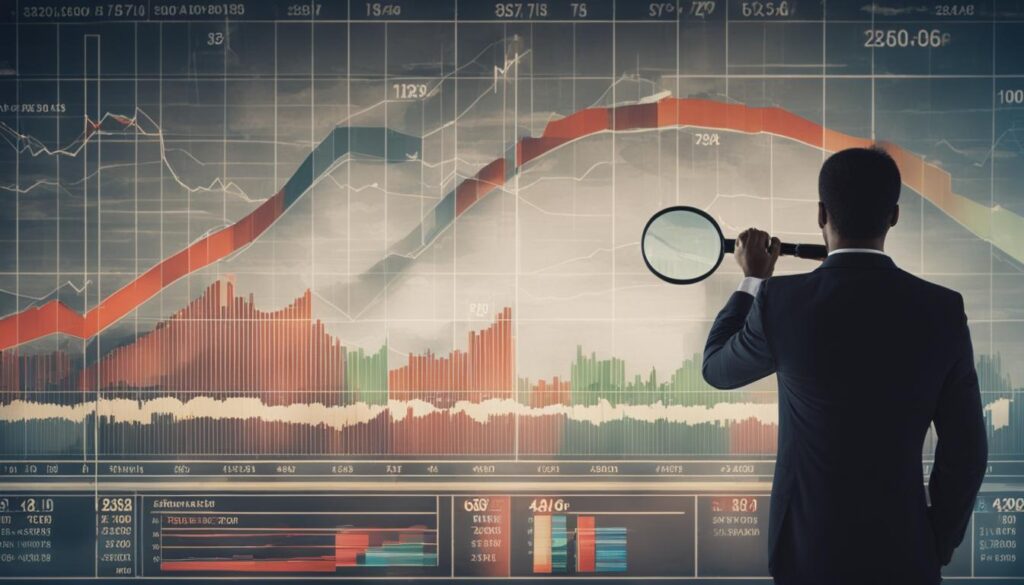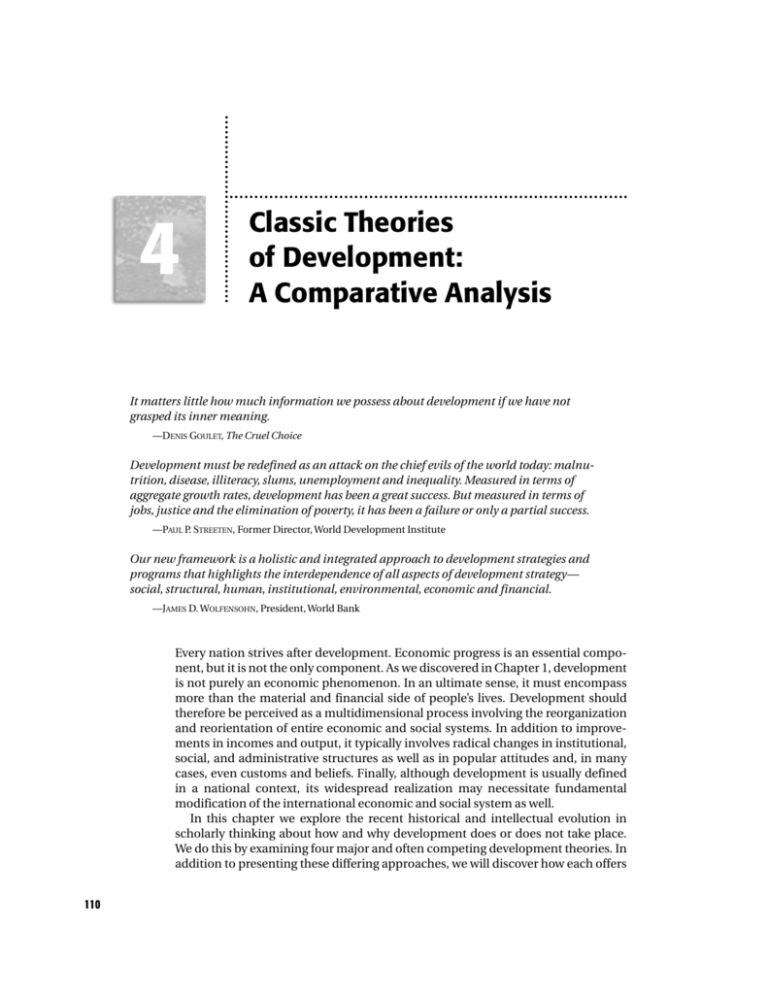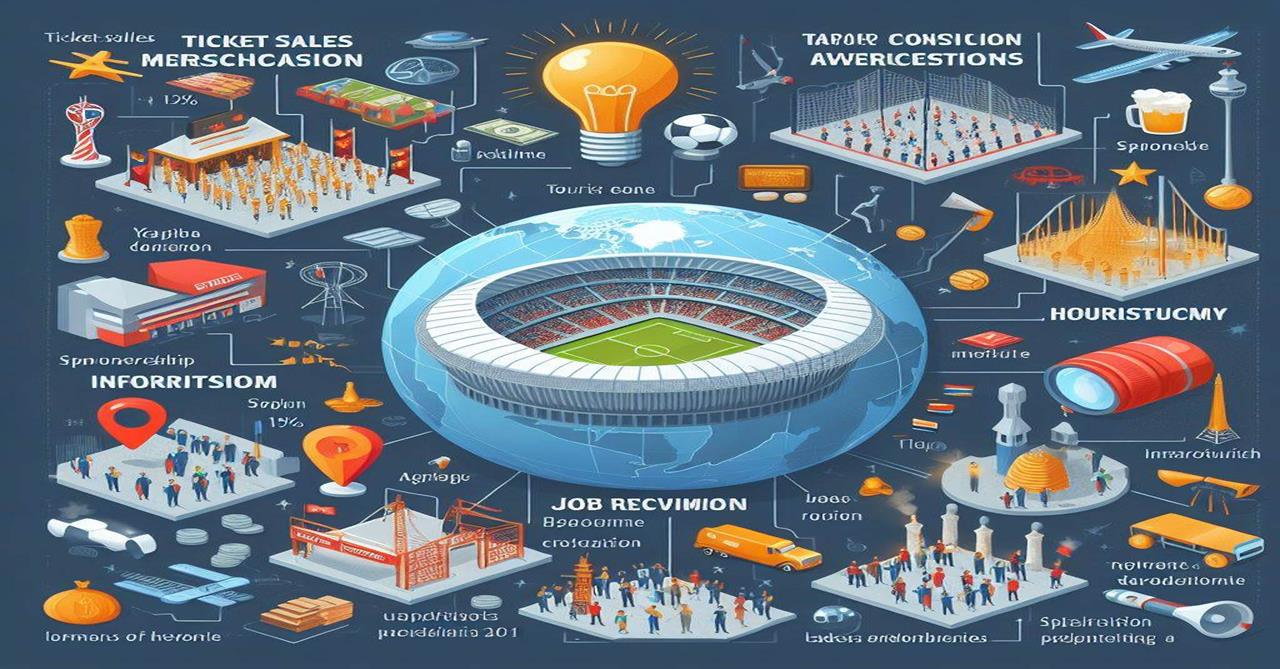
Understanding Global Economic Indicators: A Beginner’s Comprehensive Guide
Ever wonder why a news report about "GDP growth" or "inflation" can send stock markets soaring or plummeting? Or how central banks decide whether to raise or lower interest rates? The answers lie in global economic indicators – the vital signs of our world’s financial health.
For beginners, the world of economics can seem like a dense jungle of jargon and complex charts. But understanding these indicators isn’t just for economists or financial gurus; it’s a powerful tool for everyone. It helps you make sense of the news, understand your personal finances, and even anticipate shifts in job markets or investment opportunities.
This comprehensive guide will demystify global economic indicators, breaking down complex concepts into easy-to-understand language. By the end, you’ll have a solid foundation for interpreting the economic headlines and making more informed decisions.
Why Bother? The Importance of Economic Indicators
Think of economic indicators as the instruments on an airplane’s dashboard. Pilots use them to understand the plane’s speed, altitude, and fuel levels, ensuring a safe flight. Similarly, governments, businesses, and individuals use economic indicators to gauge the health and direction of an economy.
Here’s why they matter to you:
- For Investors: Whether you’re investing in stocks, bonds, or real estate, economic indicators help you anticipate market trends. Strong economic growth might boost company profits, while rising inflation could erode your savings.
- For Businesses: Companies use these indicators to make critical decisions: Should we expand production? Hire more staff? Invest in new technology? Understanding consumer spending patterns or interest rate forecasts directly impacts their bottom line.
- For Policymakers: Governments and central banks rely on this data to formulate policies. For example, high unemployment might prompt government spending on job creation, while runaway inflation could lead a central bank to raise interest rates.
- For Everyday People: Economic indicators affect your daily life! They influence:
- Job prospects: A growing economy generally means more jobs.
- Prices of goods and services: Inflation directly impacts your purchasing power.
- Interest rates on loans and savings: This affects your mortgage, car loans, and how much your savings earn.
- Overall financial well-being: Knowing the economic climate helps you plan for the future.
The Three Musketeers: Leading, Lagging, and Coincident Indicators
Not all indicators tell the same story or at the same time. Economists categorize them based on when they tend to signal changes in the economy:
-
Leading Indicators:
- What they are: These are like a crystal ball, attempting to predict future economic activity. They tend to change before the economy as a whole changes.
- Analogy: Think of them as the first drops of rain indicating a coming storm.
- Examples:
- Stock Market Performance: Rising stock prices often reflect investor optimism about future corporate profits.
- Consumer Confidence/Sentiment: If people feel good about the future, they’re more likely to spend.
- New Building Permits: A rise in permits suggests future construction activity.
- Manufacturing New Orders: More orders today mean more production tomorrow.
-
Coincident Indicators:
- What they are: These indicators move alongside the economy, reflecting its current state. They confirm what’s happening right now.
- Analogy: These are like the speedometer on your car, showing your current speed.
- Examples:
- Gross Domestic Product (GDP): Measures the total output of an economy in real-time.
- Personal Income: Reflects the current earnings of individuals.
- Industrial Production: Shows the current output of factories and mines.
- Retail Sales: Indicates the current level of consumer spending.
-
Lagging Indicators:
- What they are: These indicators change after the economy has already shifted. They confirm trends that have already begun.
- Analogy: These are like reviewing your mileage after a trip; it tells you how far you’ve gone, not where you’re going.
- Examples:
- Unemployment Rate: Companies typically lay off workers after a downturn begins and hire after a recovery is well underway.
- Inflation (Consumer Price Index – CPI): Price changes often become evident after shifts in supply and demand.
- Interest Rates: Central banks often adjust rates in response to confirmed economic trends.
- Corporate Profits: Profits are calculated after business has occurred.
Understanding these categories helps you interpret the news: a leading indicator might give you an early heads-up, while a lagging indicator confirms if a previous prediction came true.
Key Economic Indicators You Should Know (The "Big Ones")
Now, let’s dive into the specific indicators you’ll frequently encounter and what they mean for the global economy.
1. Gross Domestic Product (GDP)
- What it is: GDP is the total monetary value of all finished goods and services produced within a country’s borders in a specific period (usually quarterly or annually). It’s the most common measure of a country’s economic size and health.
- Why it matters:
- Economic Growth: A rising GDP generally indicates economic expansion and prosperity. A shrinking GDP (negative growth for two consecutive quarters) is typically considered a recession.
- Standard of Living: While not a perfect measure, higher GDP per person often correlates with a higher standard of living.
- How to interpret:
- Growth Rate: Economists focus on the percentage change in GDP from one period to the next.
- Real vs. Nominal: "Real GDP" adjusts for inflation, giving a more accurate picture of actual production growth, while "nominal GDP" does not. Always look for "real GDP" when assessing growth.
2. Inflation (Consumer Price Index – CPI & Producer Price Index – PPI)
- What it is: Inflation is the rate at which the general level of prices for goods and services is rising, and consequently, the purchasing power of currency is falling.
- CPI (Consumer Price Index): Measures the average change over time in the prices paid by urban consumers for a market basket of consumer goods and services (e.g., food, housing, transportation, medical care). This is the most common measure of inflation for everyday people.
- PPI (Producer Price Index): Measures the average change over time in the selling prices received by domestic producers for their output. It’s often seen as a leading indicator for CPI, as rising producer costs can eventually be passed on to consumers.
- Why it matters:
- Purchasing Power: High inflation erodes the value of your money, meaning you can buy less with the same amount.
- Interest Rates: Central banks often raise interest rates to combat high inflation, making borrowing more expensive.
- Business Costs: Rising input costs (from PPI) can squeeze business profits.
- How to interpret:
- Target Rate: Most central banks aim for a low, stable inflation rate (often around 2%).
- Too High: Can lead to economic instability and reduce real wages.
- Too Low (Deflation): Can also be harmful, leading consumers to delay purchases anticipating lower prices, which hurts businesses.
3. Unemployment Rate
- What it is: The percentage of the total labor force that is unemployed but actively seeking employment and willing to work.
- Why it matters:
- Economic Health: A low unemployment rate suggests a healthy, growing economy with plenty of job opportunities.
- Consumer Spending: More people working means more income, which fuels consumer spending – a major driver of GDP.
- Social Stability: High unemployment can lead to social unrest and increased government welfare spending.
- How to interpret:
- Falling Rate: Generally positive, indicating job growth.
- Rising Rate: Generally negative, indicating job losses or a slowing economy.
- Natural Rate: Even in a healthy economy, there’s always some unemployment (people changing jobs, new graduates looking for work). This is known as the "natural rate" or "full employment."
4. Interest Rates (Central Bank Policy Rates)
- What it is: The rate at which commercial banks can borrow money from the country’s central bank (e.g., the Federal Reserve in the US, European Central Bank in the Eurozone). These rates influence all other interest rates in the economy, from mortgages to business loans.
- Why it matters:
- Borrowing Costs: Higher central bank rates mean higher interest rates for consumers and businesses, making borrowing more expensive.
- Lending & Saving: Higher rates can encourage saving but discourage borrowing and investment.
- Inflation Control: Central banks raise rates to cool down an overheating economy and curb inflation. They lower rates to stimulate a sluggish economy.
- How to interpret:
- Rate Hikes: Often signal the central bank is concerned about inflation or sees strong economic growth. Can slow down economic activity.
- Rate Cuts: Often signal the central bank wants to stimulate growth or combat a recession. Can boost economic activity.
5. Trade Balance (Exports vs. Imports)
- What it is: The difference between a country’s total value of exports (goods and services sold to other countries) and its total value of imports (goods and services bought from other countries).
- Trade Surplus: Exports > Imports (a country sells more than it buys).
- Trade Deficit: Imports > Exports (a country buys more than it sells).
- Why it matters:
- Economic Competitiveness: A trade surplus can indicate a country’s industries are competitive globally.
- Currency Strength: Persistent trade deficits can sometimes put downward pressure on a country’s currency.
- Global Interconnectedness: Reveals how much a country relies on global trade.
- How to interpret:
- Large, Persistent Deficit: Can raise concerns about job losses in domestic industries or reliance on foreign debt.
- Large Surplus: Can sometimes lead to trade tensions with other countries.
6. Consumer Confidence/Sentiment
- What it is: Surveys that measure how optimistic or pessimistic consumers are about the state of the economy and their own financial future.
- Why it matters:
- Consumer Spending: Confident consumers are more likely to spend money, especially on big-ticket items like cars or homes, which drives a significant portion of GDP.
- Leading Indicator: Changes in confidence can signal future shifts in consumer behavior.
- How to interpret:
- Rising Confidence: Positive sign for future economic growth.
- Falling Confidence: Can signal a slowdown in consumer spending and potentially a recession.
7. Purchasing Managers’ Index (PMI) – Manufacturing & Services
- What it is: A survey-based indicator that measures the health of the manufacturing and services sectors. Purchasing managers are asked about new orders, production, employment, supplier deliveries, and inventories.
- Why it matters:
- Business Activity: Provides a quick snapshot of whether economic activity in these key sectors is expanding or contracting.
- Leading Indicator: New orders component is particularly valuable as a leading indicator.
- How to interpret:
- Above 50: Indicates expansion in the sector. The further above 50, the faster the expansion.
- Below 50: Indicates contraction. The further below 50, the faster the contraction.
8. Housing Market Data (Housing Starts, Existing Home Sales)
- What it is: Measures of activity in the real estate sector.
- Housing Starts: The number of new residential construction projects begun during a specific period.
- Existing Home Sales: The number of previously owned homes sold.
- Why it matters:
- Economic Multiplier: The housing sector has a significant ripple effect on the economy (construction jobs, demand for furniture, appliances, etc.).
- Interest Rate Sensitivity: Highly sensitive to interest rates, as most home purchases involve mortgages.
- Consumer Wealth: For many, their home is their biggest asset, so housing values impact consumer wealth and confidence.
- How to interpret:
- Rising Starts/Sales: Positive, indicates a healthy real estate market and consumer confidence.
- Falling Starts/Sales: Negative, can signal economic slowdown or high interest rates deterring buyers.
9. Stock Market Indices (e.g., S&P 500, Dow Jones, FTSE 100, Nikkei 225)
- What it is: A measure of the performance of a basket of stocks, representing a particular market or sector. They reflect investor sentiment and expectations about future corporate earnings.
- Why it matters:
- Leading Indicator: Often considered a leading indicator because stock prices react quickly to news and expectations.
- Wealth Effect: A rising stock market can make people feel wealthier, encouraging more spending.
- Corporate Health: Generally, a rising market suggests investors believe companies will perform well.
- How to interpret:
- Bull Market (rising prices): Reflects optimism and economic growth expectations.
- Bear Market (falling prices): Reflects pessimism and concerns about economic slowdown or recession.
10. Bond Yields (Especially Government Bonds)
- What it is: The return an investor receives on a bond. Government bond yields (e.g., 10-year Treasury yield in the US) are particularly important.
- Why it matters:
- Interest Rate Expectations: Bond yields often reflect market expectations for future interest rates and inflation.
- Safe Haven: During times of economic uncertainty, investors often flock to "safe" government bonds, driving their prices up and yields down.
- Yield Curve: The relationship between short-term and long-term bond yields can signal economic turning points (an "inverted yield curve" where short-term yields are higher than long-term ones has often preceded recessions).
- How to interpret:
- Rising Yields: Can indicate expectations of stronger economic growth or higher inflation, potentially leading to higher borrowing costs.
- Falling Yields: Can indicate expectations of slower growth, lower inflation, or a flight to safety.
Where to Find Reliable Economic Data
Now that you know what to look for, where do you find this crucial information? Stick to official, reputable sources:
- Government Agencies:
- United States: Bureau of Economic Analysis (BEA) for GDP, Bureau of Labor Statistics (BLS) for unemployment and inflation, Census Bureau for trade.
- United Kingdom: Office for National Statistics (ONS).
- Eurozone: Eurostat.
- Canada: Statistics Canada.
- Central Banks:
- United States: Federal Reserve (the Fed).
- Eurozone: European Central Bank (ECB).
- Japan: Bank of Japan (BOJ).
- United Kingdom: Bank of England (BoE).
- International Organizations:
- International Monetary Fund (IMF): Publishes global economic outlooks and data.
- World Bank: Focuses on development economics and data.
- Organisation for Economic Co-operation and Development (OECD): Provides economic data and analysis for developed countries.
- Reputable Financial News Outlets: While they interpret the data, they also report the raw numbers when they are released. Look for sources like The Wall Street Journal, Financial Times, Bloomberg, Reuters, The Economist.
Beyond the Numbers: Interpreting Indicators Like a Pro (Even as a Beginner)
Simply knowing what an indicator is isn’t enough. Here’s how to think like an economist (even if you’re just starting):
- Context is King: Never look at one indicator in isolation. A strong GDP number might seem great, but if inflation is out of control, it’s not as positive. Economic indicators are interconnected.
- Look for Trends, Not Single Points: A single month’s unemployment figure might be an anomaly. Look for consistent patterns over several months or quarters. Is the unemployment rate trending down or up?
- Expectations vs. Reality: Financial markets often react more to whether an indicator meets, exceeds, or falls short of analysts’ expectations, rather than just the raw number itself. A "good" number that was worse than expected can still cause a negative market reaction.
- Revisions Happen: Economic data is often released as "preliminary" and then revised later as more information becomes available. Don’t be surprised if numbers change.
- Global Interconnectedness: Remember, it’s a global economy. What happens in China or Germany can affect the US, and vice versa. Keep an eye on major economies beyond your own.
- Don’t Overreact: Economic data can be volatile. It’s a marathon, not a sprint. Focus on the long-term implications rather than day-to-day fluctuations.
Conclusion: Your Journey to Economic Literacy Begins Now
Understanding global economic indicators is a journey, not a destination. You won’t become an expert overnight, but by consistently paying attention to these key metrics, you’ll gradually build your economic literacy.
This knowledge empowers you. It helps you navigate the financial world with greater confidence, make smarter personal and professional decisions, and better understand the forces shaping your future. Start by picking one or two indicators you’re most interested in and track them. Read the news with a more critical eye, asking yourself: "How does this economic data affect me?"
The global economy might seem vast and complex, but with this beginner’s guide, you now have the foundational tools to start making sense of it. Happy exploring!




Post Comment